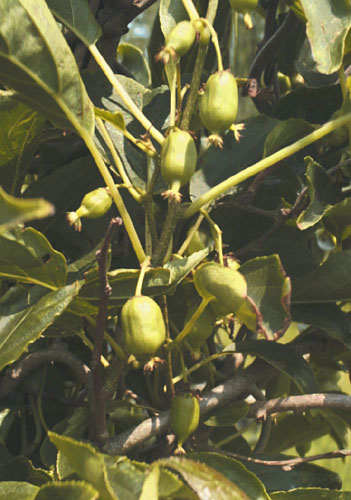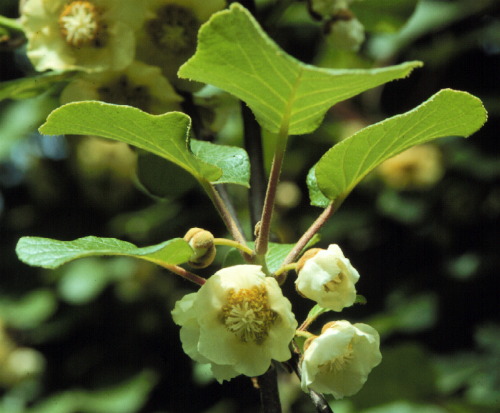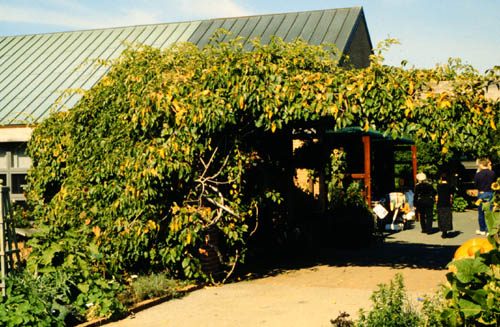Actinidia arguta
Bower Actinidia, Tara Vine
Actinidiaceae
ExpandHabitat
- native to Japan, Korea, and Manchuria
- zone 4
Habit and Form
- a twining vine; requires support
- deciduous
- a very fast-growing plant (15' to 20' per year)
- medium to coarse texture
- 25' to 30'; may be limited only by the height of its support
Summer Foliage
- alternate, simple, unlobed leaves with sharp serrations; 3" to 5" long
- lustrous, unmarred dark green color
Autumn Foliage
- very late to color and drop leaves
- usually remains green, may turn yellowish
Flowers
- whitish-green with purple anthers; 0.80" across
- in clusters at leaf axils, hidden by leaves
- fragrant
- June-July
- dioecious
Fruit
- berry, 1" long, fleshy, greenish
- edible but not very flavorful
- male and female plants needed for fruit set
Bark
- brownish, with many lenticels
Culture
- best grown in infertile soil to slow its growth
- can be pruned any time of year
- requires a strong support, as the vines are heavy
Landscape Uses
- useful where quick foliage cover is desired
Liabilities
- may outgrow it's boundaries if not pruned vigilantly
ID Features
- a twining vine
- leaf scar is raised, looks like an eyeball
Propagation
- by seed
Cultivars/Varieties
Many cultivars are noted for different fruit characters, however only 'Issai' is commonly available. This form is perfect-flowered and requires no pollinator to set abundant crops of fruit.



